Abstract
A study was made of the reactions involved in the cellular regulatory function known as catabolite repression. These studies employed the glucose-repressible, β-galactosidase system of Escherichia coli and involved an investigation of glucose dissimilation under cultural conditions capable of permitting or preventing expression of catabolite repression. The results indicated that reactions associated with pyruvate decarboxylation are of particular importance in influencing repression. This conclusion was based on results obtained by measurement of differential rates of C14O2 evolution from specifically labeled 14C-glucose substrates, and by measurements of H2 evolution during anaerobic growth. Catabolite repression measured in relation to steady-state growth rates indicated that the repression mechanism may in fact be a direct consequence of a cell's energy balance, as dictated by the production from pyruvate of “high-energy” molecules such as adenosine triphosphate or acetyl-coenzyme A. The apparent involvement of pyruvate metabolism in both the energetics and the expression of catabolite repression in E. coli is consistent with this view.
Full text
PDF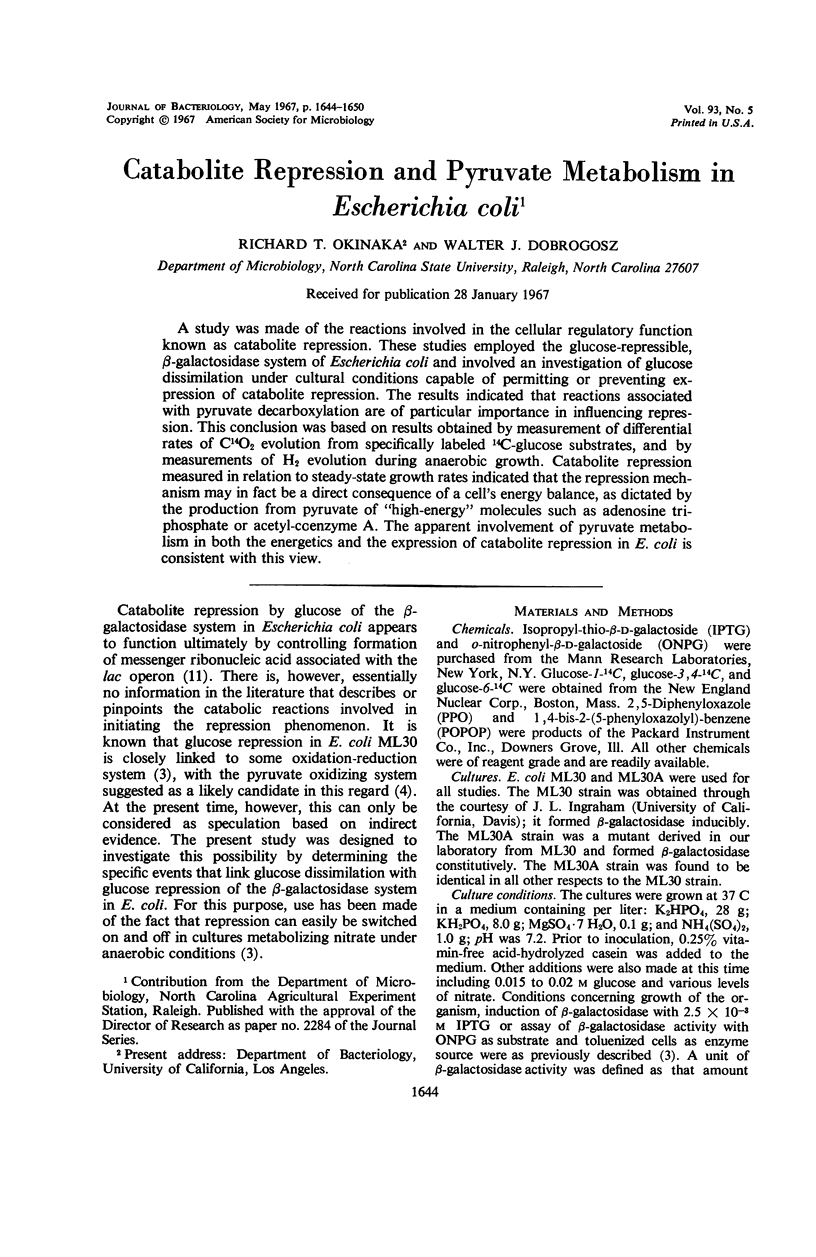
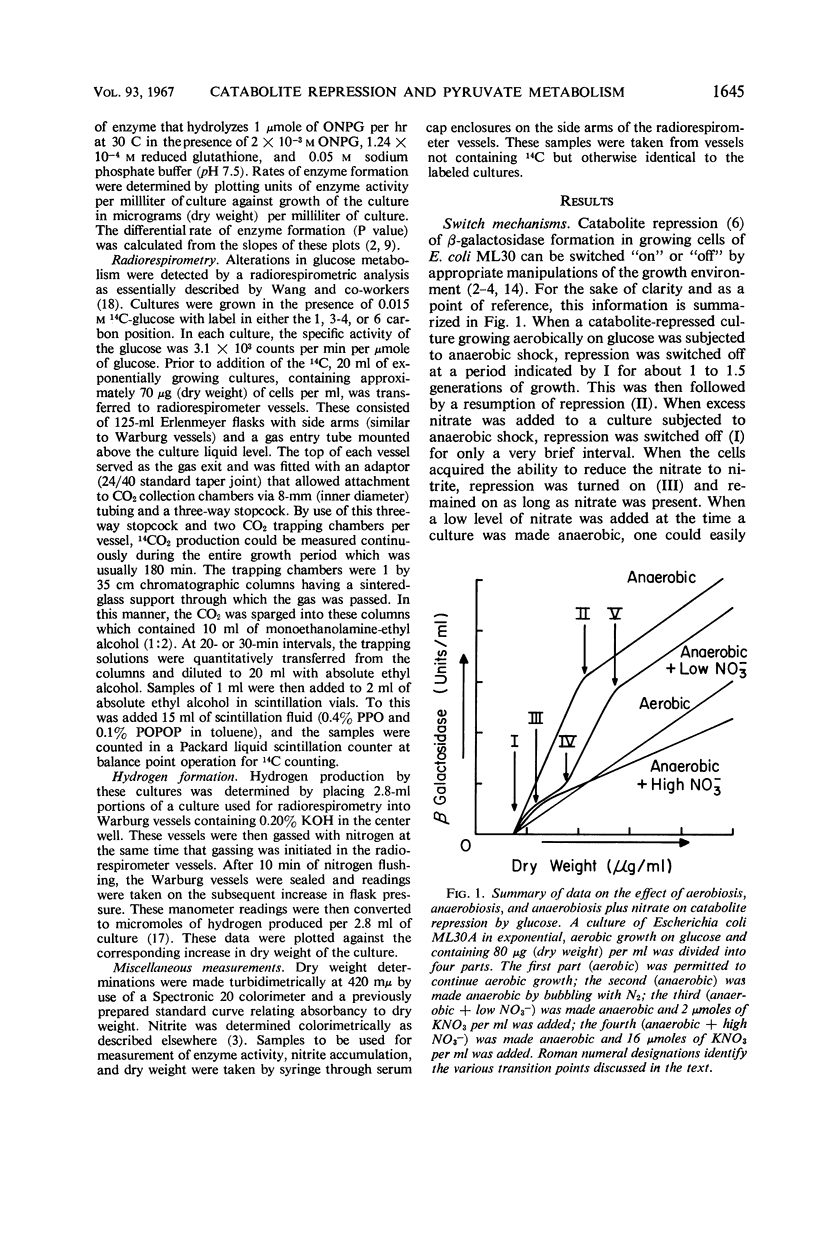
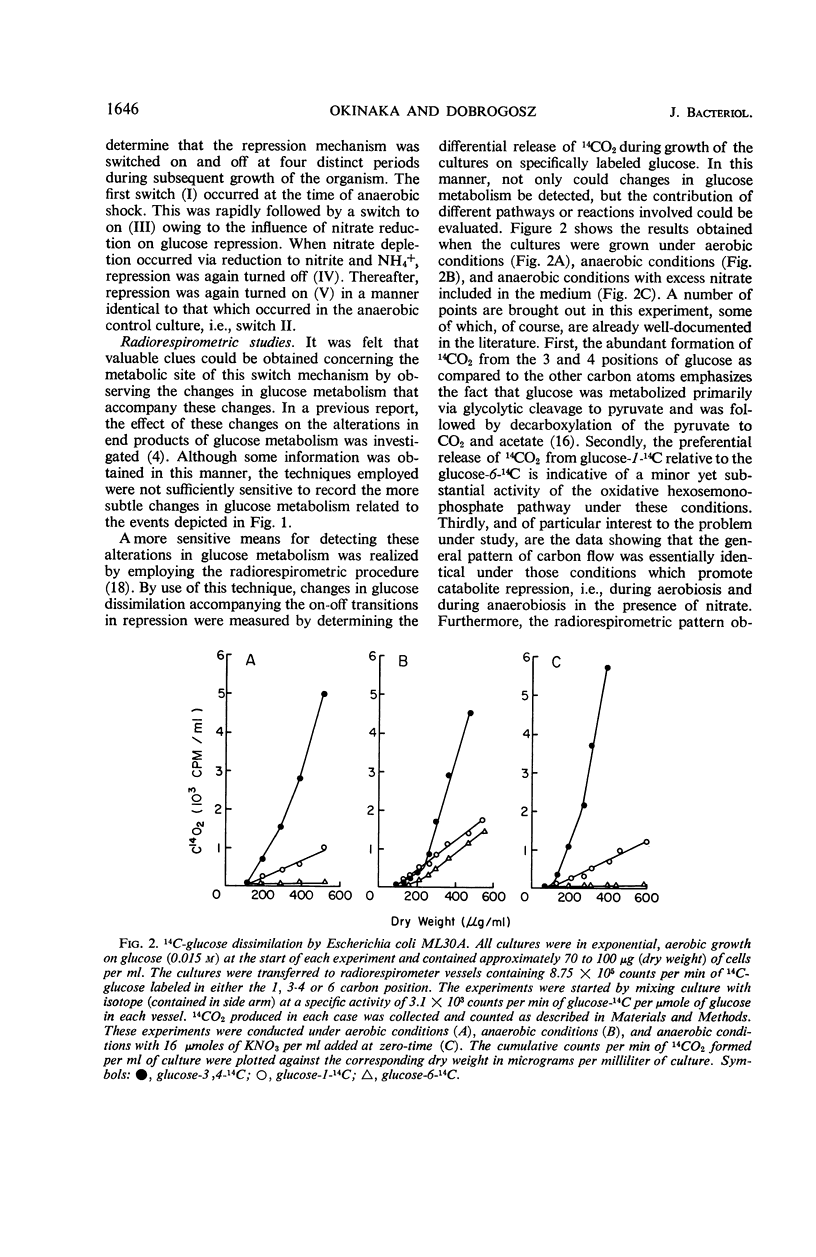
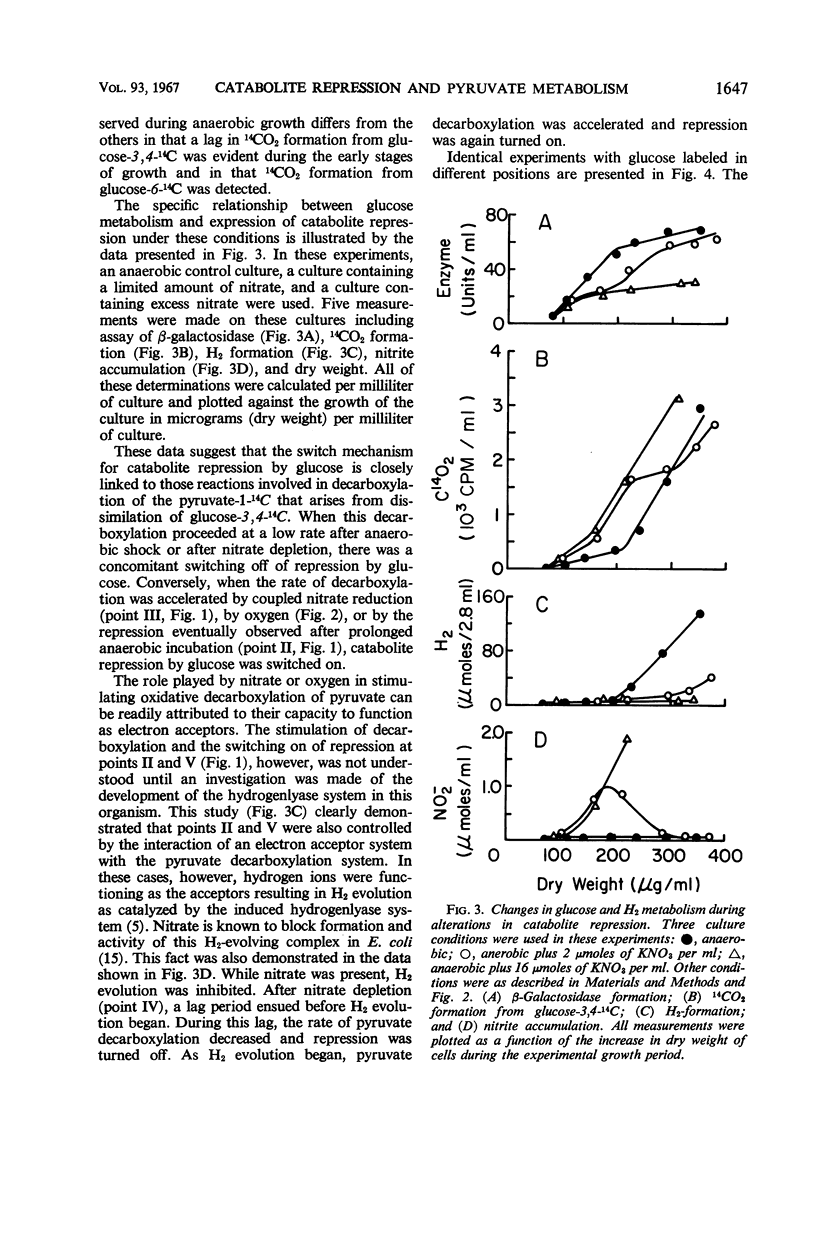
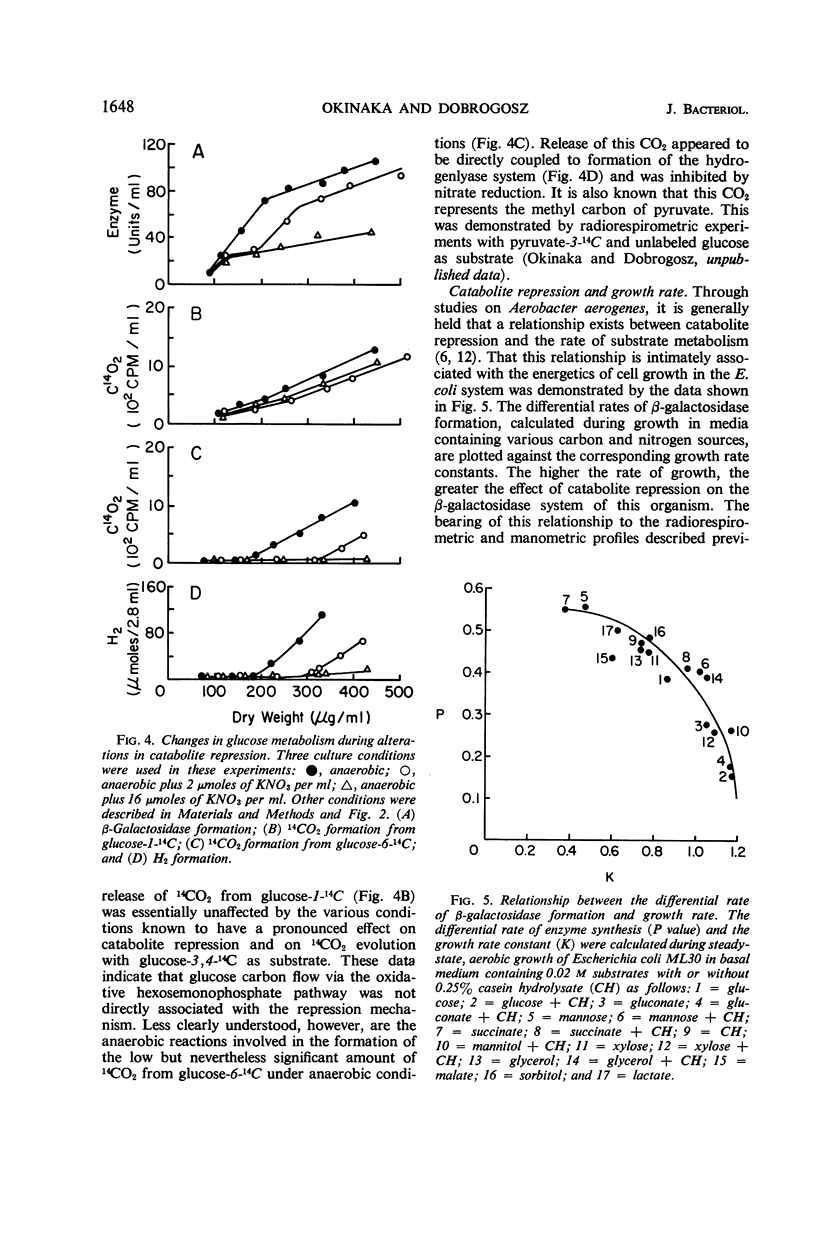
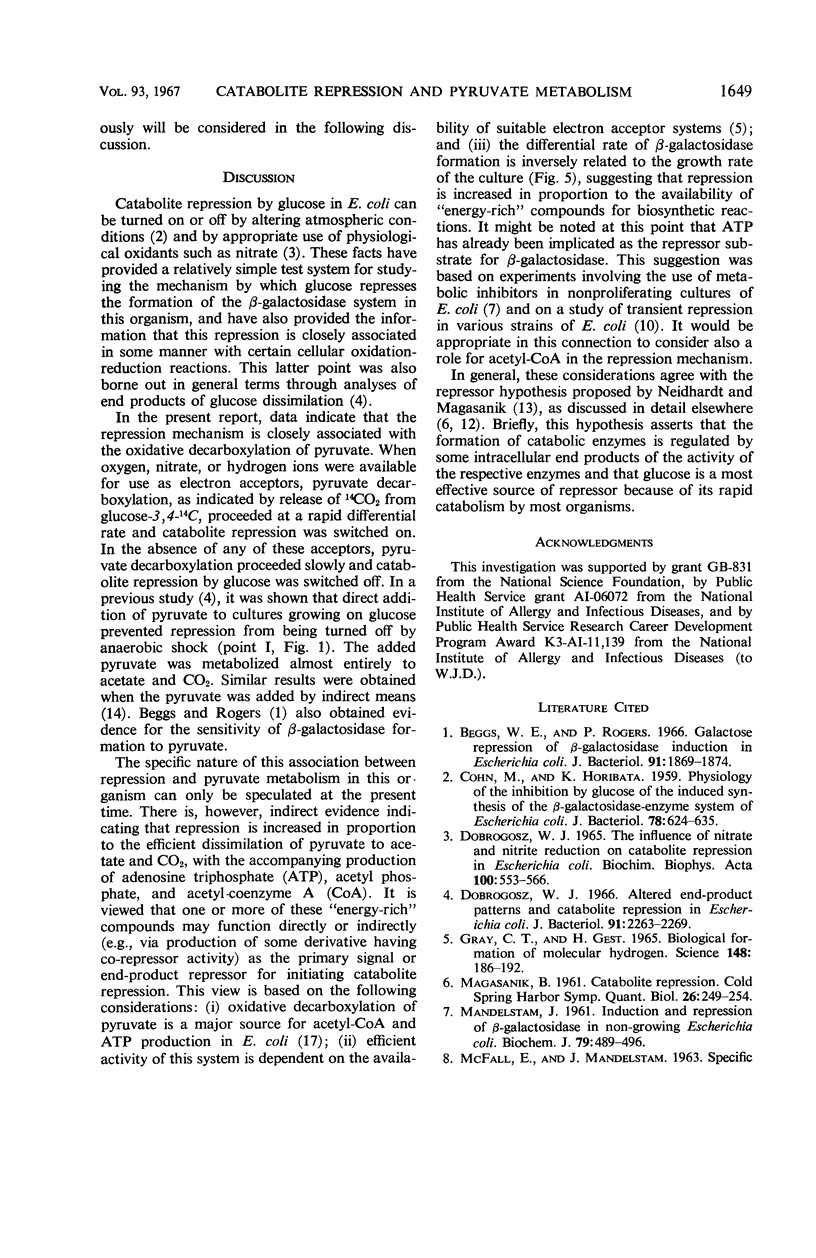
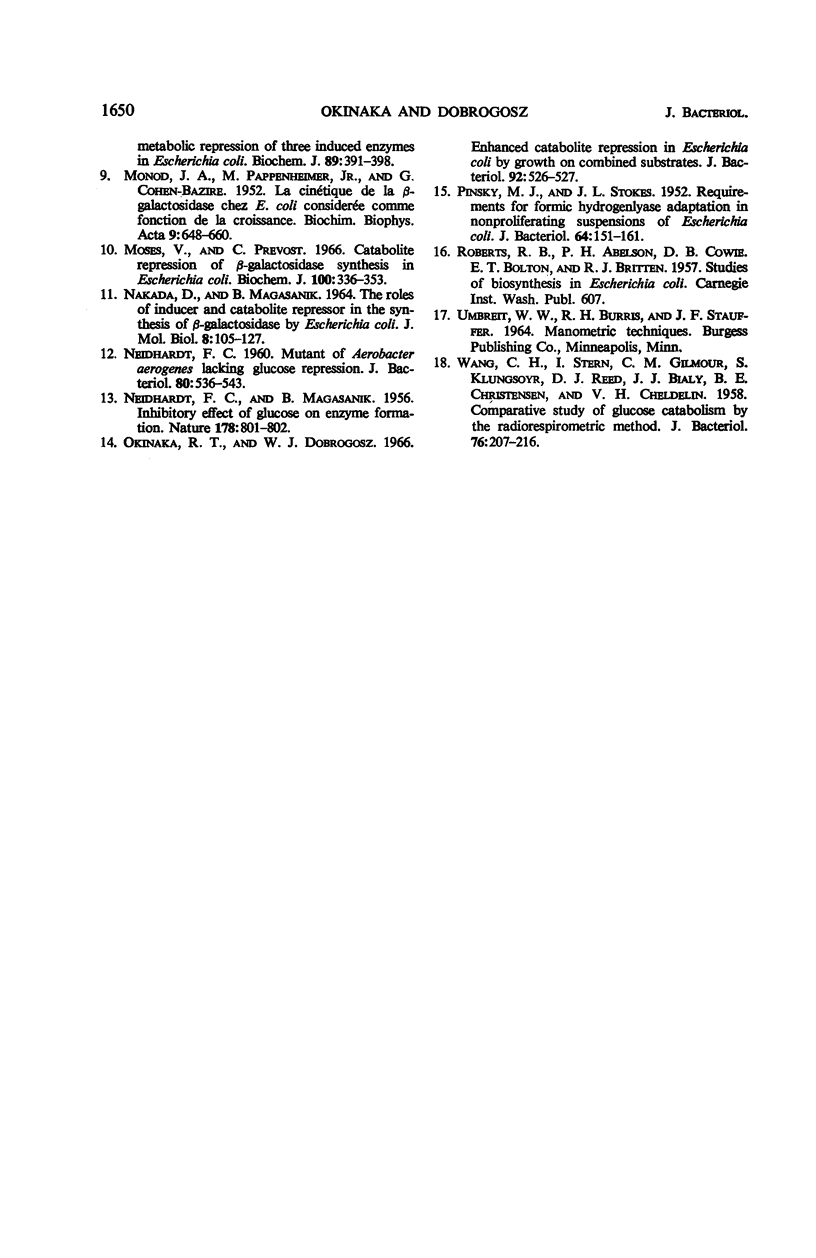
Selected References
These references are in PubMed. This may not be the complete list of references from this article.
- Beggs W. H., Rogers P. Galactose repression of beta-galactosidase induction in Escherichia coli. J Bacteriol. 1966 May;91(5):1869–1874. doi: 10.1128/jb.91.5.1869-1874.1966. [DOI] [PMC free article] [PubMed] [Google Scholar]
- COHN M., HORIBATA K. Physiology of the inhibition by glucose of the induced synthesis of the beta-galactosideenzyme system of Escherichia coli. J Bacteriol. 1959 Nov;78:624–635. doi: 10.1128/jb.78.5.624-635.1959. [DOI] [PMC free article] [PubMed] [Google Scholar]
- DOBROGOSZ W. J. THE INFLUENCE OF NITRATE AND NITRITE REDUCTION ON CATABOLITE REPRESSION IN ESCHERICHIA COLI. Biochim Biophys Acta. 1965 May 4;100:553–566. doi: 10.1016/0304-4165(65)90025-5. [DOI] [PubMed] [Google Scholar]
- Dobrogosz W. J. Altered end-product patterns and catabolite repression in Escherichia coli. J Bacteriol. 1966 Jun;91(6):2263–2269. doi: 10.1128/jb.91.6.2263-2269.1966. [DOI] [PMC free article] [PubMed] [Google Scholar]
- GRAY C. T., GEST H. BIOLOGICAL FORMATION OF MOLECULAR HYDROGEN. Science. 1965 Apr 9;148(3667):186–192. doi: 10.1126/science.148.3667.186. [DOI] [PubMed] [Google Scholar]
- MAGASANIK B. Catabolite repression. Cold Spring Harb Symp Quant Biol. 1961;26:249–256. doi: 10.1101/sqb.1961.026.01.031. [DOI] [PubMed] [Google Scholar]
- MAGASANIK B., NEIDHARDT F. C. Inhibitory effect of glucose on enzyme formation. Nature. 1956 Oct 13;178(4537):801–802. doi: 10.1038/178801b0. [DOI] [PubMed] [Google Scholar]
- MANDELSTAM J. Induction and repression of beta-galactosidase in non-growing Escherichia coli. Biochem J. 1961 Jun;79:489–496. doi: 10.1042/bj0790489. [DOI] [PMC free article] [PubMed] [Google Scholar]
- MCFALL E., MANDELSTAM J. SPECIFIC METABOLIC REPRESSION OF THREE INDUCED ENZYMES IN ESCHERICHIA COLI. Biochem J. 1963 Nov;89:391–398. doi: 10.1042/bj0890391. [DOI] [PMC free article] [PubMed] [Google Scholar]
- Moses V., Prevost C. Catabolite repression of beta-galactosidase synthesis in Escherichia coli. Biochem J. 1966 Aug;100(2):336–353. doi: 10.1042/bj1000336. [DOI] [PMC free article] [PubMed] [Google Scholar]
- NAKADA D., MAGASANIK B. THE ROLES OF INDUCER AND CATABOLITE REPRESSOR IN THE SYNTHESIS OF BETA-GALACTOSIDASE BY ESCHERICHIA COLI. J Mol Biol. 1964 Jan;8:105–127. doi: 10.1016/s0022-2836(64)80153-4. [DOI] [PubMed] [Google Scholar]
- Okinaka R. T., Dobrogosz W. J. Enhanced Catabolite Repression in Escherichia coli by Growth on Combined Substrates. J Bacteriol. 1966 Aug;92(2):526–527. doi: 10.1128/jb.92.2.526-527.1966. [DOI] [PMC free article] [PubMed] [Google Scholar]
- PINSKY M. J., STOKES J. L. Requirements for formic hydrogenlyase adaptation in nonproliferating suspensions of escherichia coli. J Bacteriol. 1952 Aug;64(2):151–161. doi: 10.1128/jb.64.2.151-161.1952. [DOI] [PMC free article] [PubMed] [Google Scholar]
- WANG C. H., STERN I., GILMOUR C. M., KLUNGSOYR S., REED D. J., BIALY J. J., CHRISTENSEN B. E., CHELDELIN V. H. Comparative study of glucose catabolism by the radiorespirometric method. J Bacteriol. 1958 Aug;76(2):207–216. doi: 10.1128/jb.76.2.207-216.1958. [DOI] [PMC free article] [PubMed] [Google Scholar]


